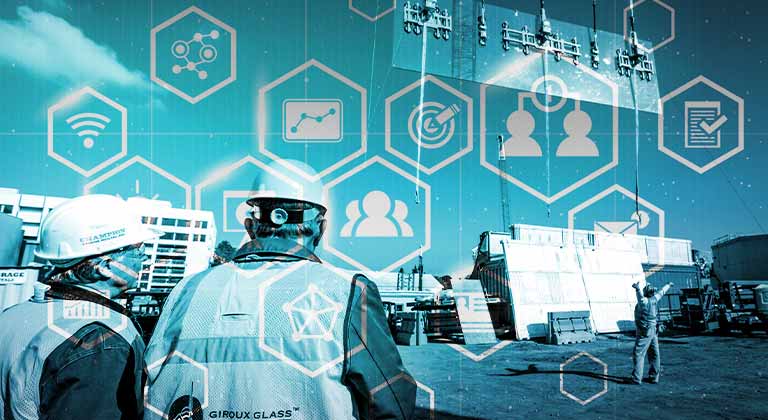
The gradual integration of advanced technology into our everyday lives is not a new concept. Many devices that once seemed advanced and untouchable have now become essential to our modern way of life — from cars and airplanes to smartphones. This pervasiveness of technology and its ability to make our lives more efficient extends to every industry, including construction.
In fact, a recent poll showed that 78% of contractors believe advanced construction technologies can boost efficiency on many levels, increasing productivity and decreasing time with the effect of reducing overall costs on a given project. But what is this technology and how exactly does it work? That’s what this article aims to explore.
Improving Project Management
Any construction industry professional has experienced the pitfalls of poor project management. A lack of coordination and communication can lead to costly delays at virtually every phase of a build. Luckily, technological advancements like 4D Building Information Modeling (BIM) can make a huge difference in predicting potential issues long before they cause delays.
The 4th dimension in 4D BIM is time — so contractors are able to utilize BIM technology to more accurately predict a project’s schedule. According to Navigant, the function allows all project participants “to foresee and avoid problems such as having multiple trades working in the same small space at the same time.” It is easy to see how this type of management can be a boon for glazing projects, since glaziers need significant space to maneuver large sheets of glass into place safely.
In addition, it’s critically important to document at every stage of construction. The use of ubiquitous cameras in cell phones and on-site iPads has significantly increased the amount of photo-taking and documentation, preventing future misunderstandings over construction methods, conditions encountered, or the manner in which a job was completed, making project management and review that much more reliable.
Advanced Project Planning
While 3-D-printed glass is neither widely available nor cost-effective for large construction projects, 3D printing technology has improved efficiency within the construction industry at large in a number of ways. 3-D printing technology not only allows for more elaborate project planning and visualization, it also lets certain contractors prefabricate custom components offsite, which translates to more efficient on-site installation.
Real-Time Data
Big data has been a buzzword across industries for some time now, but the construction industry has only recently started to uncover the wide range of possibilities it provides for improved efficiency and cost savings. According to one recent article, technologies like wearables, sensors, and even mobile phones “can collect accurate information about materials installed, quality of work, safety incidents, environmental data and man-hours.”
Furthermore, rather than rely on antiquated hand-written timesheets, new mobile apps enable field crews to “clock in” from the job site in real time and log their hours into relevant accounting codes from the moment a shift begins. This prevents lag time in receiving the information and reduces errors in reporting, both for timekeeping and assignment to the correct internal job codes.
Equipment Tracking
Installing electronic tracking devices on equipment and tools not only helps to prevent loss and theft, it can also pinpoint exact locations where required items are at the precise time that they’re needed. This system takes inventory of tools and equipment with a simple click, rather than with the laborious gathering and counting of the past. Well tracked, expediently counted equipment translates to significant cost savings over time.
Advanced Glass Technology
As a glazing company, we’re especially interested in new developments in glass technologies. One notable addition to the glass industry is so-called “smart” glass, which changes its tint based on the degree of light exposure it receives. Once programmed, these windows automatically darken to reduce energy and block heat on bright sunny days, and remain clear to optimize light exposure on overcast days. With these dynamic abilities, smart glass is able to increase efficiency while allowing for outdoor views — a big advantage over the use of shades and/or blinds — making it aesthetically valuable as well.
According to Fast Company, smart glass reduces dependence on HVAC systems to maintain comfortable temperatures, which can significantly lower overhead costs associated with heating and cooling a facility. With smart glass’ energy-efficient properties, buildings can afford to decrease the usage, size, and complexity of their HVAC systems, which in turn, reduces monthly bills and maintenance fees. Over time, the investment of implementing smart glass technologies pays for itself.
Technological improvements in construction have become so commonplace that they’re sometimes easy to overlook. But as the examples listed above demonstrate, new building-related technologies can directly and indirectly improve a project’s bottom line. Construction companies that have the foresight to leverage these advancements are likely to put themselves at a significant advantage in coming years, staying relevant on an industry-wide level while investing in efficiencies that will save them money down the line.